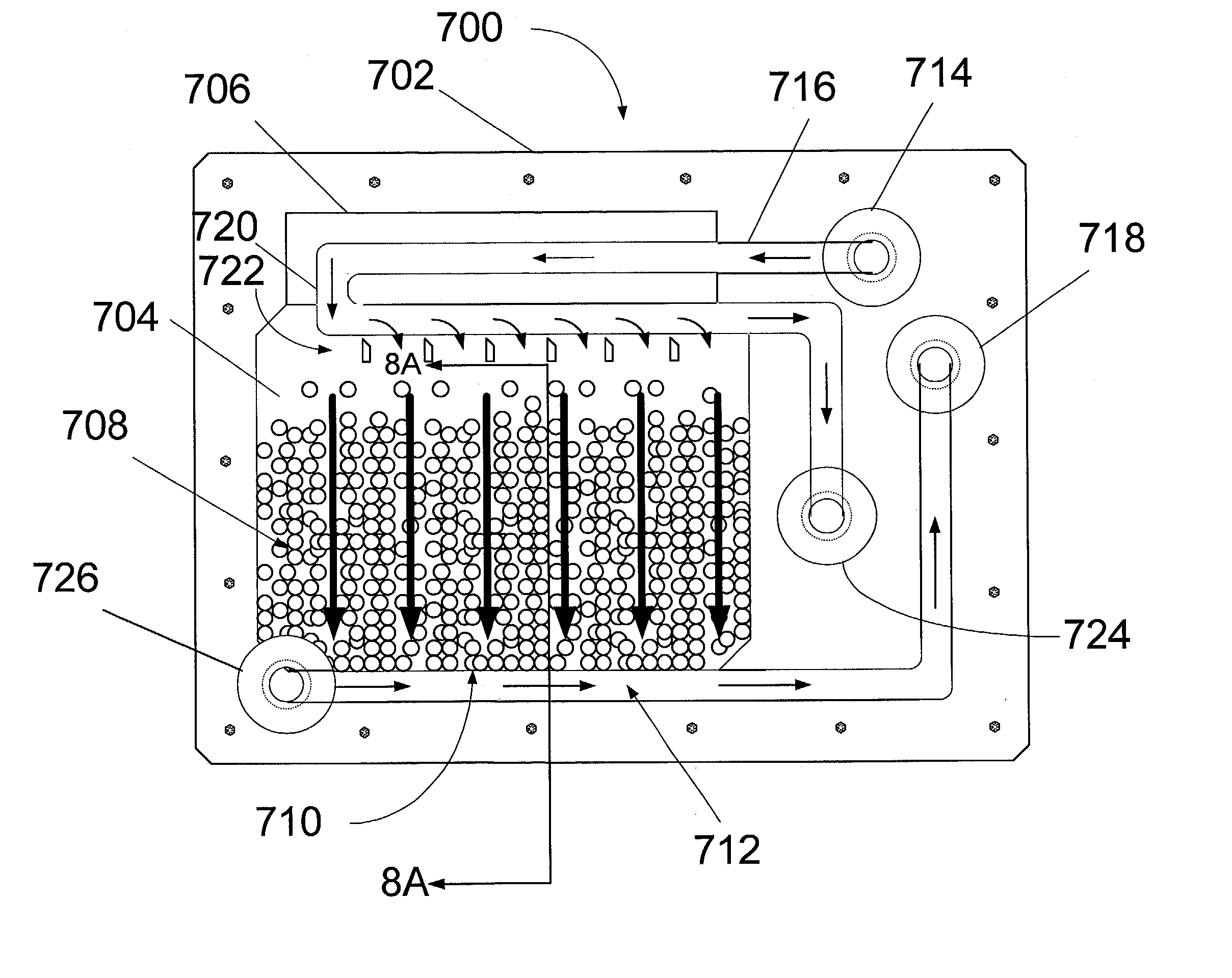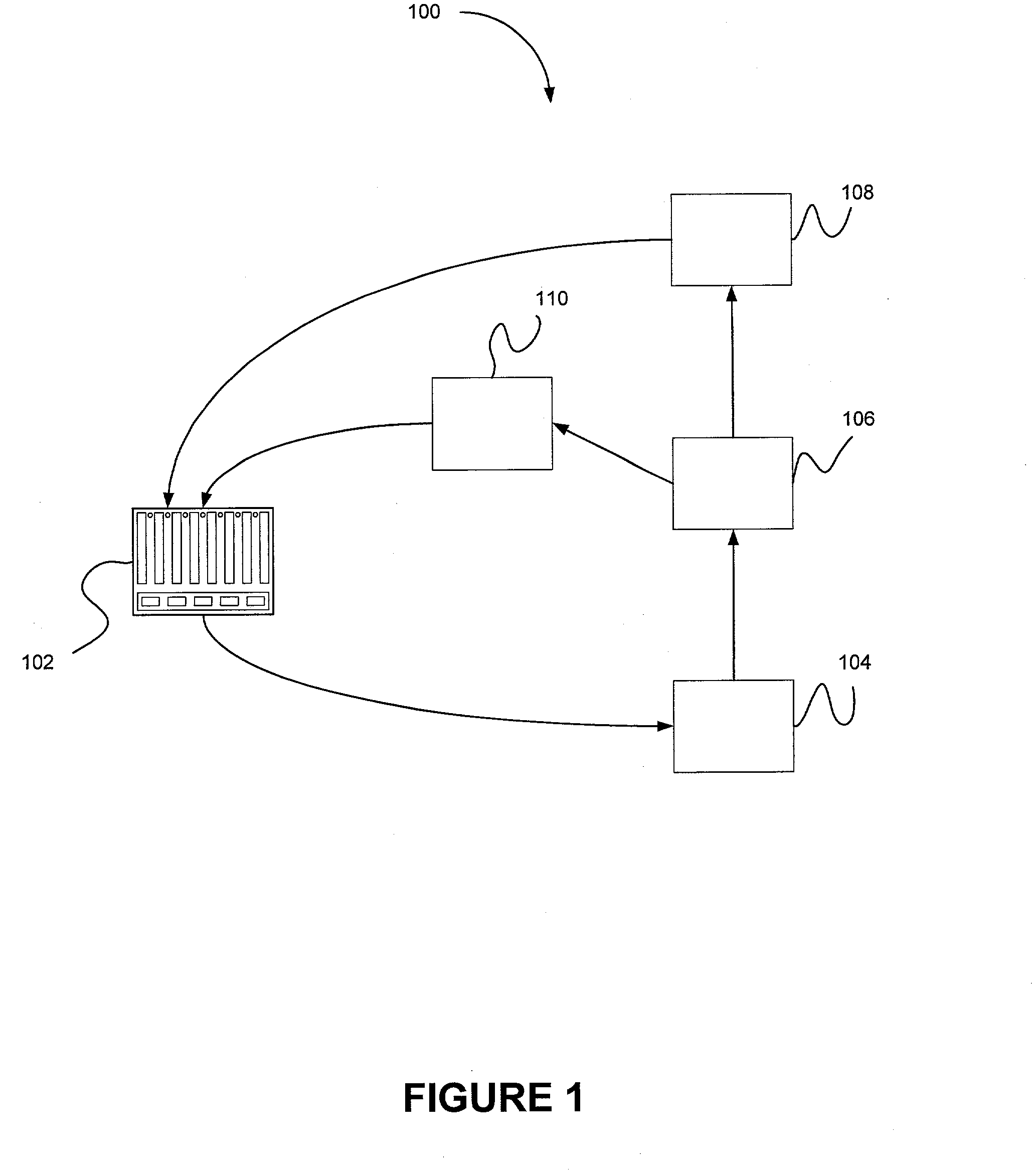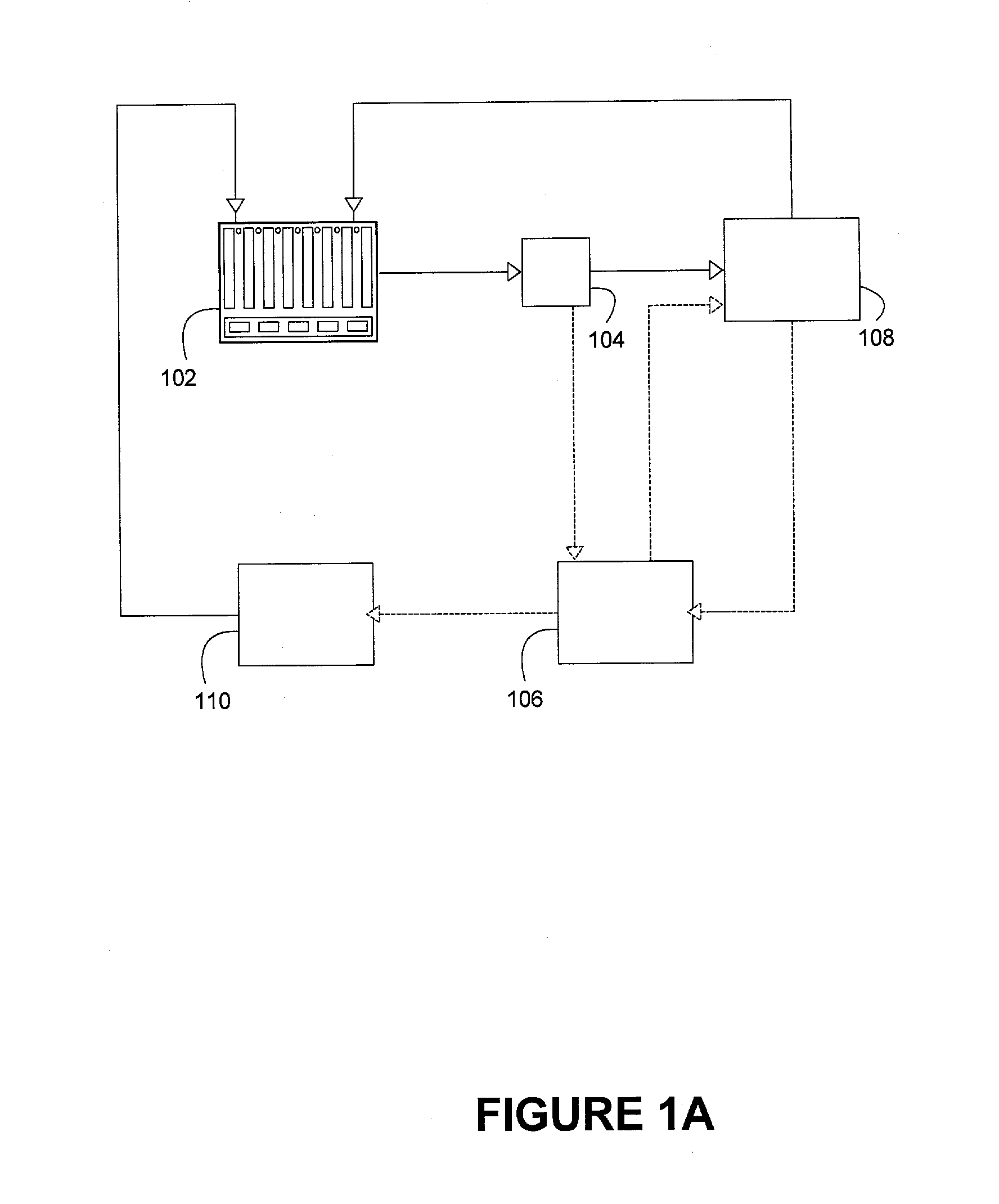Method of and system for flushing one or more cells in a particle-based electrochemical power source in standby mode
a technology of electrochemical power source and particle-based electrochemical, which is applied in the direction of separation process, basic electric element, electric apparatus, etc., can solve the problems of particle buildup, recirculation and electrochemical reaction can have undesired consequences, and reduce the flow of reaction solution through the anode bed
- Summary
- Abstract
- Description
- Claims
- Application Information
AI Technical Summary
Problems solved by technology
Method used
Image
Examples
example
[0098] FIG. 7 is a front view of an embodiment of an individual cell 700 within the power source 102 of a metal-based fuel cell. A particulate anode 708 is maintained within a cell cavity 704 of the cell. Within the cell cavity 704, when the cell is in standby mode, the particulate anode may undergo electrochemical dissolution (although at a much slower rate than the discharge mode) due to corrosion.
[0099] A first flow path for a recirculating flow of the reaction solution is provided through the anode. This flow path may be activated in the standby mode of operation. In the particular embodiment illustrated in FIG. 7, the first flow path extends from top to bottom through the anode, and is represented by the vertical arrows within cell cavity 704. When the power source is in the standby mode, reaction solution (usually essentially free of metal particles, although it is possible to include them) enters the cell at orifice 714, proceeds along conduit 716, and is distributed into the...
second embodiment
[0112] A cross section 830 of cell 700 is illustrated in FIG. 8B. Again, this cross section represents the view 8B-8B of the cell 700 in FIG. 7. As with the previous embodiment, the cross-section is formed of a planar laminate arrangement of layers comprising from left to right cathode 806, separator 804, particulate anode 708, and current collector 808 embedded in a cell frame 802. The individual features of these layers have been previously described and need not be repeated except insofar as to discuss differences with the previous embodiment, which relate to the particle releaser 832 within the cell body 802.
[0113] In this embodiment, particle releaser 832 is formed of a screen, a top view of which is illustrated in FIG. 8C. The screen is in communication with the interior of the cell cavity through the openings 840 in the screen, which form a flow channel with conduit 712. As illustrated in FIG. 8C, each opening 840 has a long axis 844 and a short axis 842. The short axis 842 o...
PUM
| Property | Measurement | Unit |
|---|---|---|
| Power | aaaaa | aaaaa |
| Concentration | aaaaa | aaaaa |
| Area | aaaaa | aaaaa |
Abstract
Description
Claims
Application Information
 Login to view more
Login to view more - R&D Engineer
- R&D Manager
- IP Professional
- Industry Leading Data Capabilities
- Powerful AI technology
- Patent DNA Extraction
Browse by: Latest US Patents, China's latest patents, Technical Efficacy Thesaurus, Application Domain, Technology Topic.
© 2024 PatSnap. All rights reserved.Legal|Privacy policy|Modern Slavery Act Transparency Statement|Sitemap



